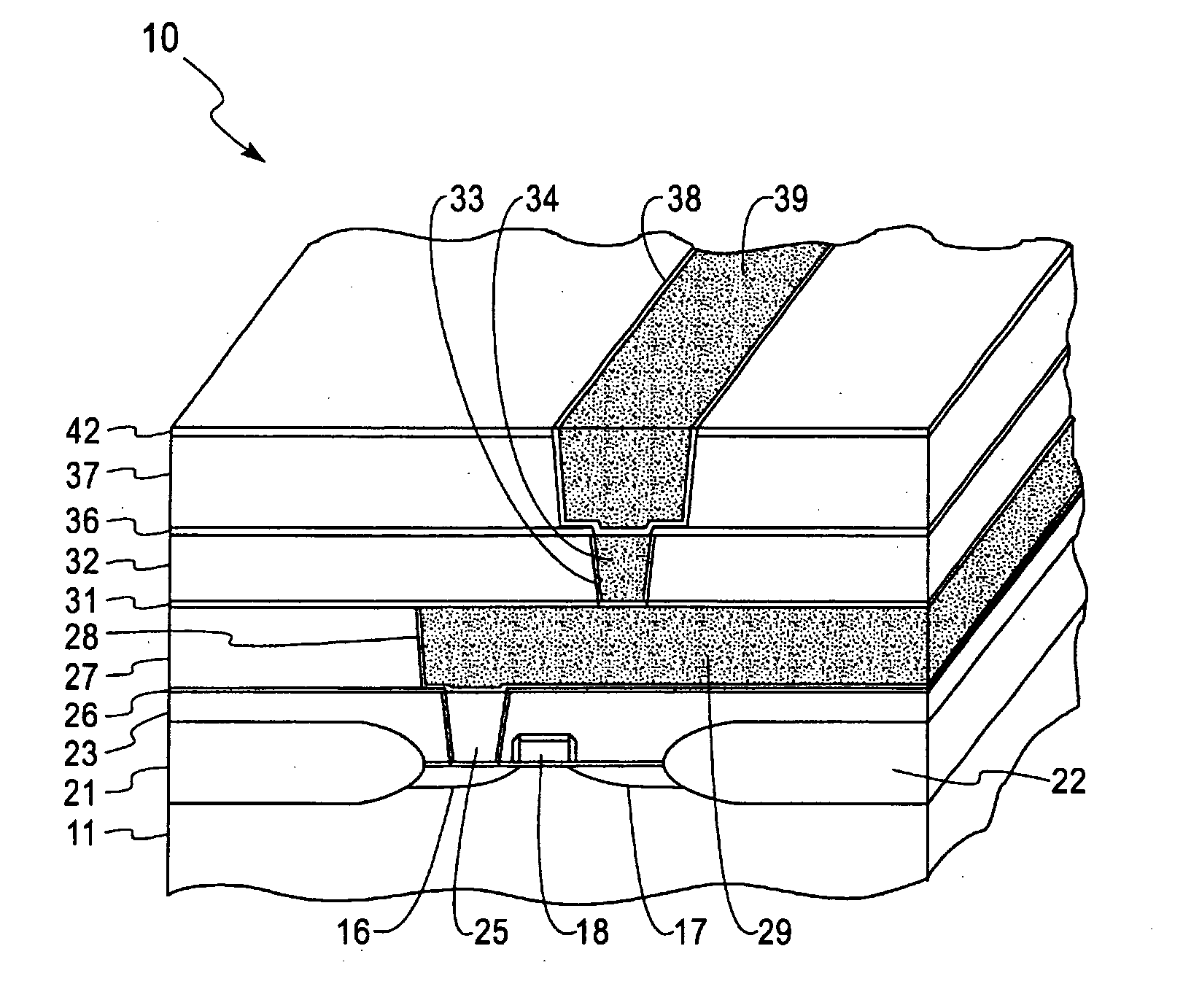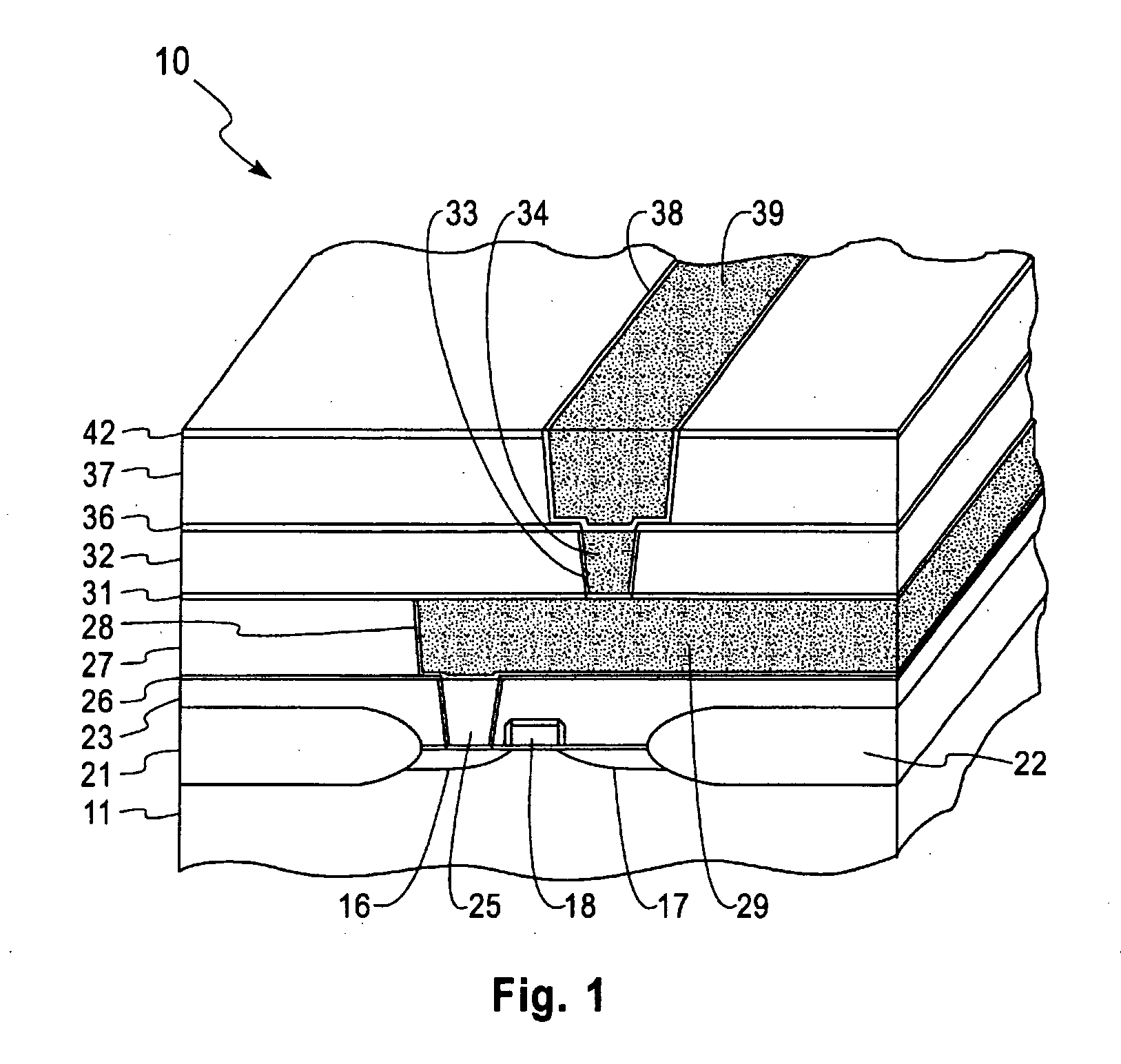Reduced electromigration and stressed induced migration of copper wires by surface coating
a technology of stress-induced migration and surface coating, applied in the direction of liquid/solution decomposition chemical coating, semiconductor/solid-state device details, coatings, etc., can solve the problem that the specifications of allowed current in cu conductors are not significantly superior to those for al(cu), and the cu conductor pattern is susceptible to atomic voiding, so as to reduce the susceptibility to electromigration, improve reliability and yield, and reduce the effect of susceptibility to stress-induced migration
- Summary
- Abstract
- Description
- Claims
- Application Information
AI Technical Summary
Benefits of technology
Problems solved by technology
Method used
Image
Examples
Embodiment Construction
[0024] Referring now to the drawing, FIG. 1 is a cross section view of an example of a Cu Back End of the Line (BEOL) structure on an integrated circuit chip 10 containing Cu lines and vias produced by a single damascene process.
[0025] In FIG. 1, integrated circuit chip 10 has a substrate 11 which may be, for example, Si, SiGe, Ge, SOI and GaAs. Substrate 11 may have formed therein, source 16 and drain 17 regions and gate 18 of a typical FET transistor 19. On either side of source 16 and drain 17 regions are recessed oxide regions 21 and 22 on substrate 11. A layer 23 of oxide is formed over oxide regions 21 and 22 and FET transistor 19. A source contact opening is formed layer 23 and filled with metal 25 which is usually tungsten. Layer 23 and metal 25 are planarized by Chemical Mechanical Polishing (CMP). A capping layer 26 of, for example, silicon nitride is formed on the upper surface of layer 23. Layer 27 of dielectric is formed on layer 26 and trenches are formed therein. A l...
PUM
| Property | Measurement | Unit |
|---|---|---|
| thickness | aaaaa | aaaaa |
| thickness | aaaaa | aaaaa |
| temperature | aaaaa | aaaaa |
Abstract
Description
Claims
Application Information
 Login to View More
Login to View More - R&D
- Intellectual Property
- Life Sciences
- Materials
- Tech Scout
- Unparalleled Data Quality
- Higher Quality Content
- 60% Fewer Hallucinations
Browse by: Latest US Patents, China's latest patents, Technical Efficacy Thesaurus, Application Domain, Technology Topic, Popular Technical Reports.
© 2025 PatSnap. All rights reserved.Legal|Privacy policy|Modern Slavery Act Transparency Statement|Sitemap|About US| Contact US: help@patsnap.com



